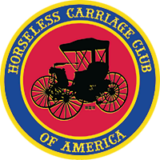By: Harold Sharon
I have repaired many such old worn brake drums. You use a metal spray coating called Metco Spraysteel LS. This is a work-hardening machinable carbon steel with, from memory, about 7% Molybdenum content. It has similar braking characteristics to sg cast iron, and is compatible with modern linings, so you are actually using invisible modern technology to significantly improve the efficiency of early brakes.
It is important with metal spray coatings to rigorously follow proper procedure. It is best if the rebuild and machining is done on the hub on a mandrel, or otherwise using accurate mounting plates on the mandrel between centers.
First, clean and degrease. Take a light cut to make the worn surface true and uniform within reason. Then, ideally, take a rough threading cut across, to give extra grip to the coating. If the material remaining is very thin, you may choose to compromise on this, because you need something reasonable to build onto.
Then, grit-blast with a fairly coarse aluminum-oxide grit to further etch and clean the surface. Do not touch the cleaned surface.
Avoid leaving the job exposed to humidity, lest oxide start to form.
First, spray coating with Metco 405. The job is heated to above 100C to ensure there is no moisture. The nickel aluminide alloys with a lot of exotherm, ideally just as it hits the surface of the drum revolving in the lathe. The steel coating can be built up as much as 3/16” thickness if necessary (LS stands for “low shrink”)
The coating should be sealed when cool enough. Coatings may typically have 5% porosity, and it is best to fill these voids so moisture cannot enter. On this application you should use a liquid air hardening phenolic.
I use the slowest speed on the lathe (10rpm) to machine with a sharp tungsten carbide tool. If you think the tip is blunt, pull out and resharpen with a diamond wheel. if the coating work-hardens you may have to grind it, which is slower. If the brakes are external contracting, remember to follow Harold Sharon’s advice about diagonal grooves in the lining every couple of inches to expel the water in wet conditions. (Napier used this trick too, about 1911 if not before).
If you have an original part that is badly worn, sprayed metal coatings often allow you to salvage it so it will give better service and last longer than the original material. If you don’t trust the thought of coatings that is fine; but for heaven’s sake never fly in a jet aircraft. The coatings in critical areas are what enable them to function reliably.
